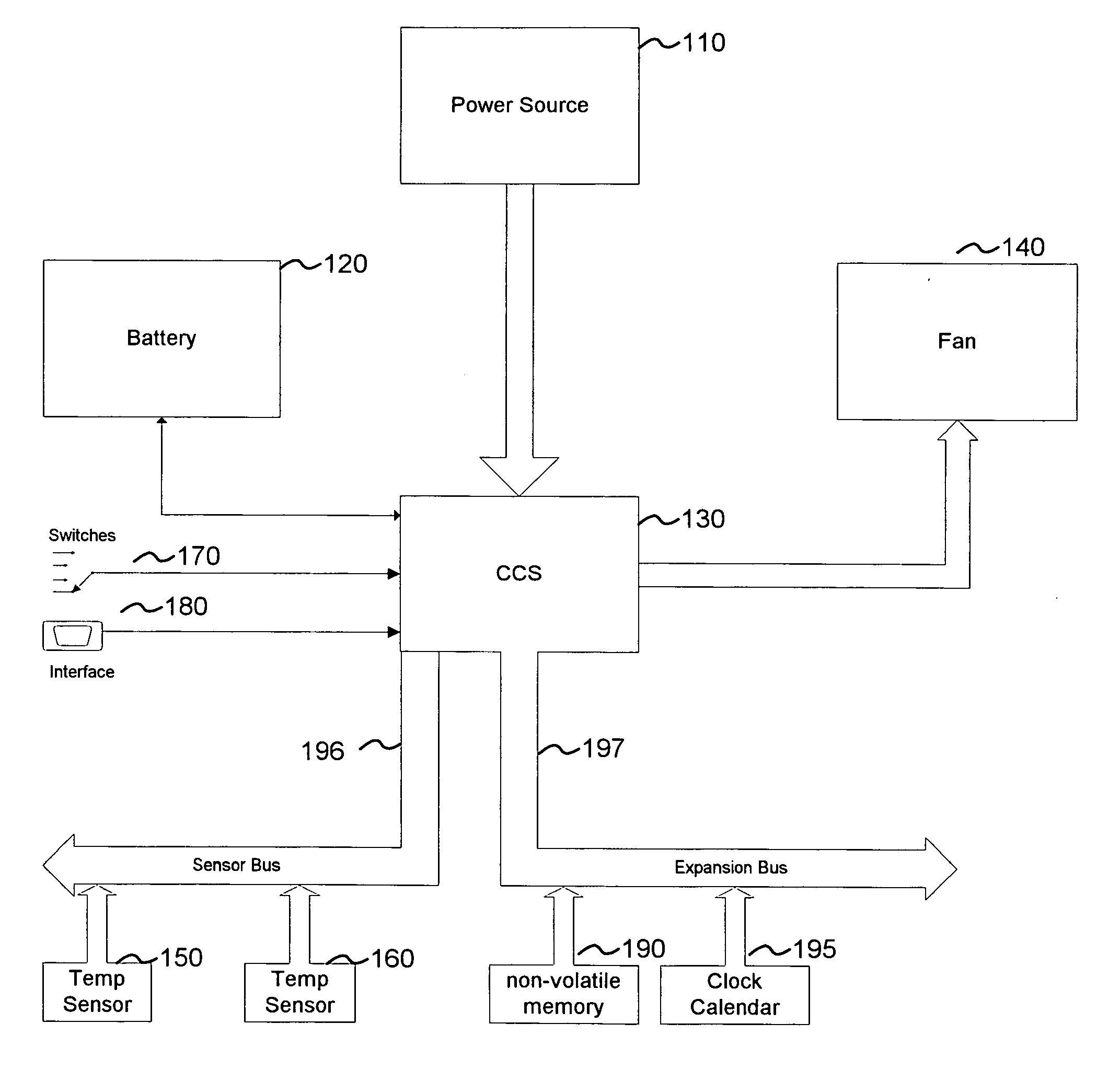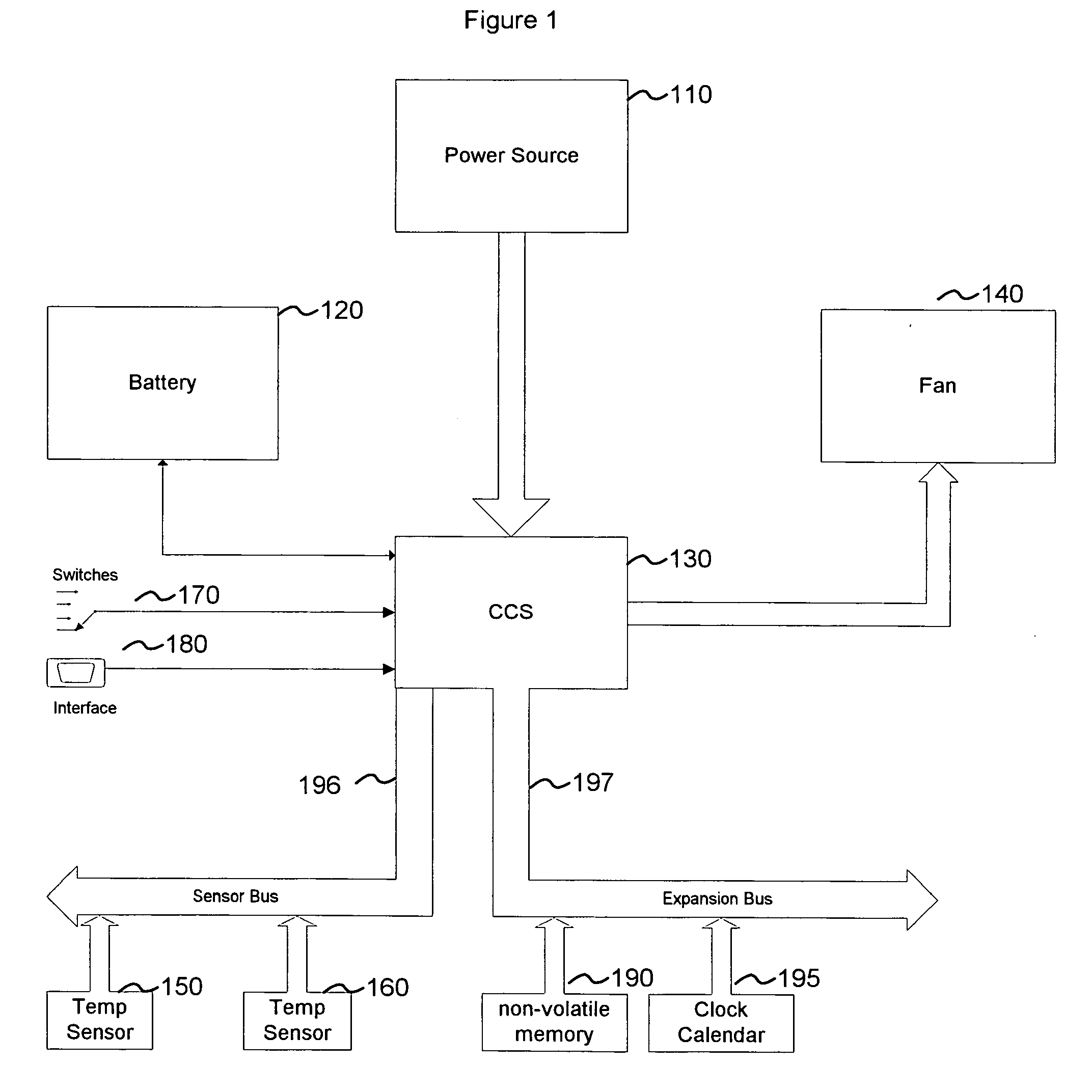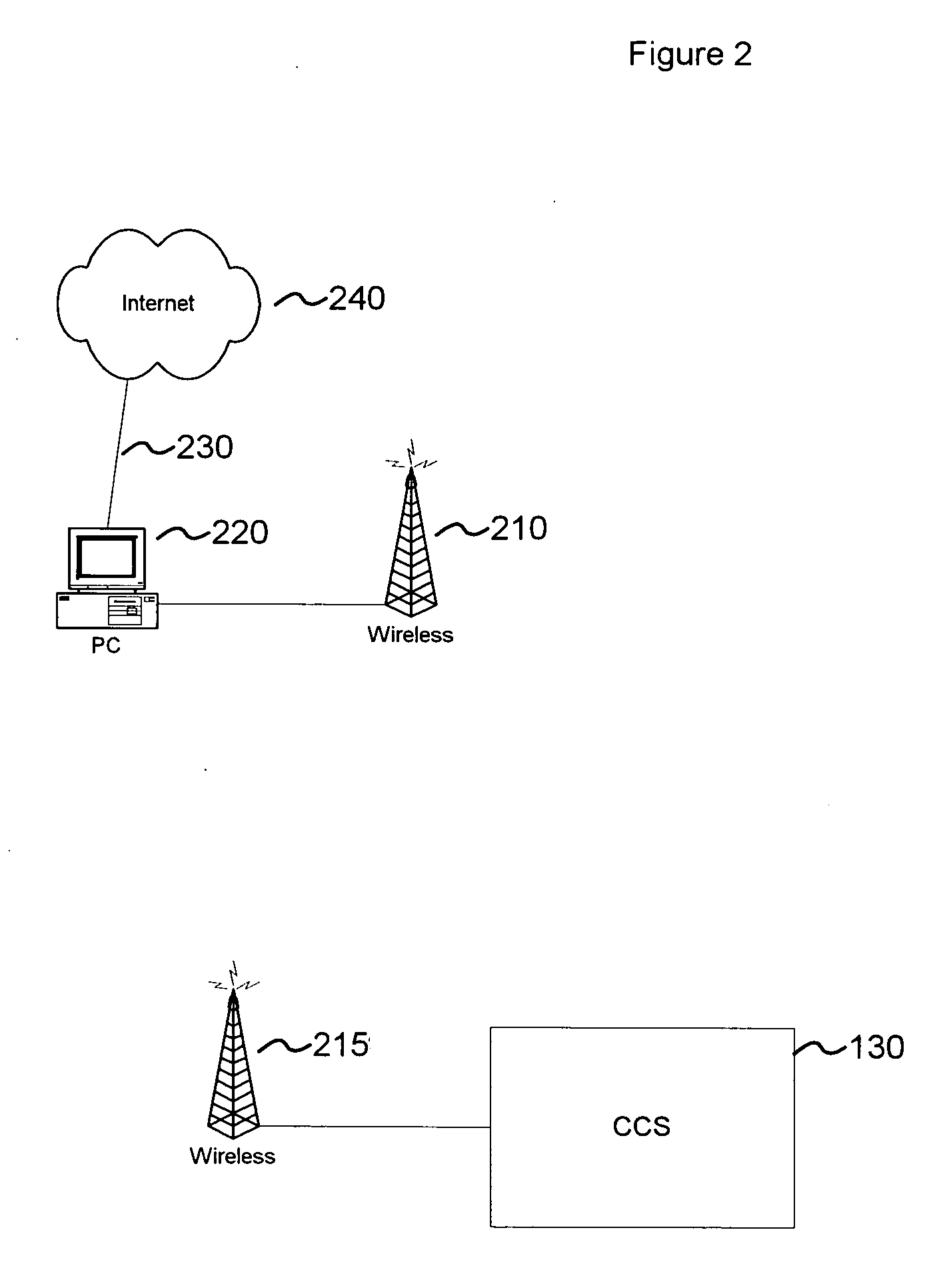Air circulation control device
a technology of air circulation and control device, which is applied in the direction of instruments, heating types, static/dynamic balance measurement, etc., can solve the problem of insufficient energy to power the fan
- Summary
- Abstract
- Description
- Claims
- Application Information
AI Technical Summary
Benefits of technology
Problems solved by technology
Method used
Image
Examples
Embodiment Construction
[0026] The following detailed description of the invention refers to the accompanying drawings. The same reference numbers in different drawings identify the same or similar elements. Also, the following detailed description does not limit the invention.
[0027]FIG. 1 is a block diagram of the basic configuration of the system. The current invention includes a power delivery device, such as a solar collector (110), battery (120), temperature sensors (150 and 160), computational control system (CCS)
[0028] (130) and fan system (140). The power delivery device (110) sends electrical power to the system. The electricity produced by the solar collector device (110) charges the battery (120). The CCS (130) performs one or more of the following functions: [0029] a) Monitors the temperature of the enclosed area based on data collected from one or more temperature sensors and humidity sensors (150). The data link (196) between the temperature sensor (150) and the CCS (130) can be either wire...
PUM
 Login to View More
Login to View More Abstract
Description
Claims
Application Information
 Login to View More
Login to View More - R&D
- Intellectual Property
- Life Sciences
- Materials
- Tech Scout
- Unparalleled Data Quality
- Higher Quality Content
- 60% Fewer Hallucinations
Browse by: Latest US Patents, China's latest patents, Technical Efficacy Thesaurus, Application Domain, Technology Topic, Popular Technical Reports.
© 2025 PatSnap. All rights reserved.Legal|Privacy policy|Modern Slavery Act Transparency Statement|Sitemap|About US| Contact US: help@patsnap.com



